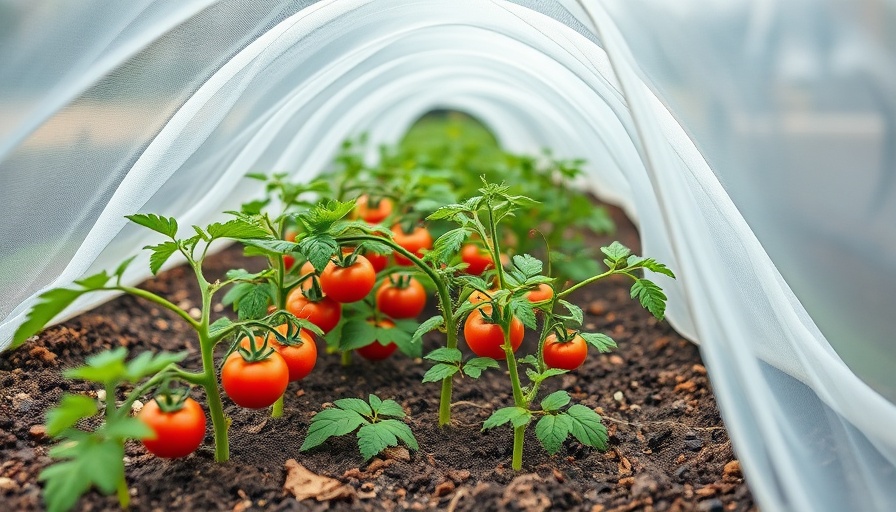
Your Spring Garden Survival Guide: Protecting Plants from Unexpected Snow
Just when you thought winter was finally over, a surprise late snowstorm hits, covering your garden in a thin blanket of white. While some plants, like evergreens, are equipped to handle the chill, many tender spring varieties may struggle to bounce back if they get too cold. Fortunately, with a bit of effort, you can shield your plants and ensure they survive those unexpected frosty days. Here are five actionable tricks that will keep your garden thriving even amidst unexpected snow.
1. Use Frost Cloths or Household Items to Shield Your Plants
Your first line of defense against a sudden snowstorm is to cover your vulnerable plants with frost cloths or even repurposed household items. These covers can trap warmth and prevent frost from damaging delicate features. For effective covering:
- Opt for breathable frost cloths that prevent suffocating your plants while effectively keeping warmth in.
- Drape the covering securely around the entire plant and anchor it to the ground using rocks, bricks, or garden stakes.
- Once temperatures rise above 40°F, remove coverings to allow air circulation and sunlight, preventing moisture buildup.
- Avoid plastic sheets unless absolutely necessary, as they retain moisture and can worsen frost damage.
2. Mulch Heavily Around Your Plants
Mulching is like giving your plants a warm, cozy blanket that not only protects them from snow but also stabilizes soil temperatures and retains moisture. A generous layer of mulch enhances insulation for plant roots, safeguarding them from potential shock during sudden temperature swings. To maximize the benefits of mulching:
- Spread 2 to 4 inches of mulch around each plant while ensuring it’s kept a few inches away from stems to prevent rot and pests.
- Choose natural materials like wood chips, straw, or shredded leaves that provide a thermal blanket effect.
- Reapply mulch as needed after rain or wind to maintain effective coverage.
- Consider using darker mulch options that absorb sunlight to warm your soil naturally.
3. Move Potted Plants Indoors
If you’re nurturing potted plants, consider temporarily relocating them indoors or to a more sheltered spot during late snow warnings. This not only shields them from snow exposure but also helps prevent wind damage. Here’s how you can pivot effectively:
- Prioritize lighter pots for easier movement—this makes it less of a hassle to bring them indoors when unpredictable weather strikes.
- Keep an eye on the local forecast and be ready to take action when snow is on the way.
- For heavy pots, position them against walls or sheltered areas to mitigate wind and prevent exposure.
4. Embrace the Power of the Hose
A good soaking before snow arrives can help plants withstand cold better. Watering plants properly increases thermal mass in the soil and reduces freeze threat. Here are some key points:
- Water early in the day, allowing time for absorption before temperatures drop in the evening.
- Consider using warm water to increase soil temperature just before freezing conditions are expected.
- Monitor moisture levels constantly; thirsty plants are more susceptible to cold stress.
5. Understand Your Plant Species
Taking the time to identify which plants need protection while knowing which can endure the cold is crucial. Not all plants react to late snow in the same way. Some resilient varieties might thrive but many others can suffer irreparable damage. Therefore:
- Research the specific requirements of your plants; understanding hardiness zones can be immensely helpful.
- Group plants based on their needs—placing more sensitive species together allows for more tailored care.
- Keep an updated plant journal noting when your plants are blooming or are particularly vulnerable.
As spring approaches and you eagerly anticipate blooming flowers and lush greenery, don’t let unexpected snow disrupt your gardening ambitions. By taking these proactive steps, you can effectively protect your plants and ensure a flourishing garden. Remember, it’s not just about surviving; it’s about thriving in every season. Stay prepared, stay vigilant, and let your green thumb shine!
Are you excited to take your gardening skills to the next level? Engage with your gardening community, seek advice, and keep learning about the best practices for protecting your plants.
 Add Row
Add Row  Add
Add 




Write A Comment